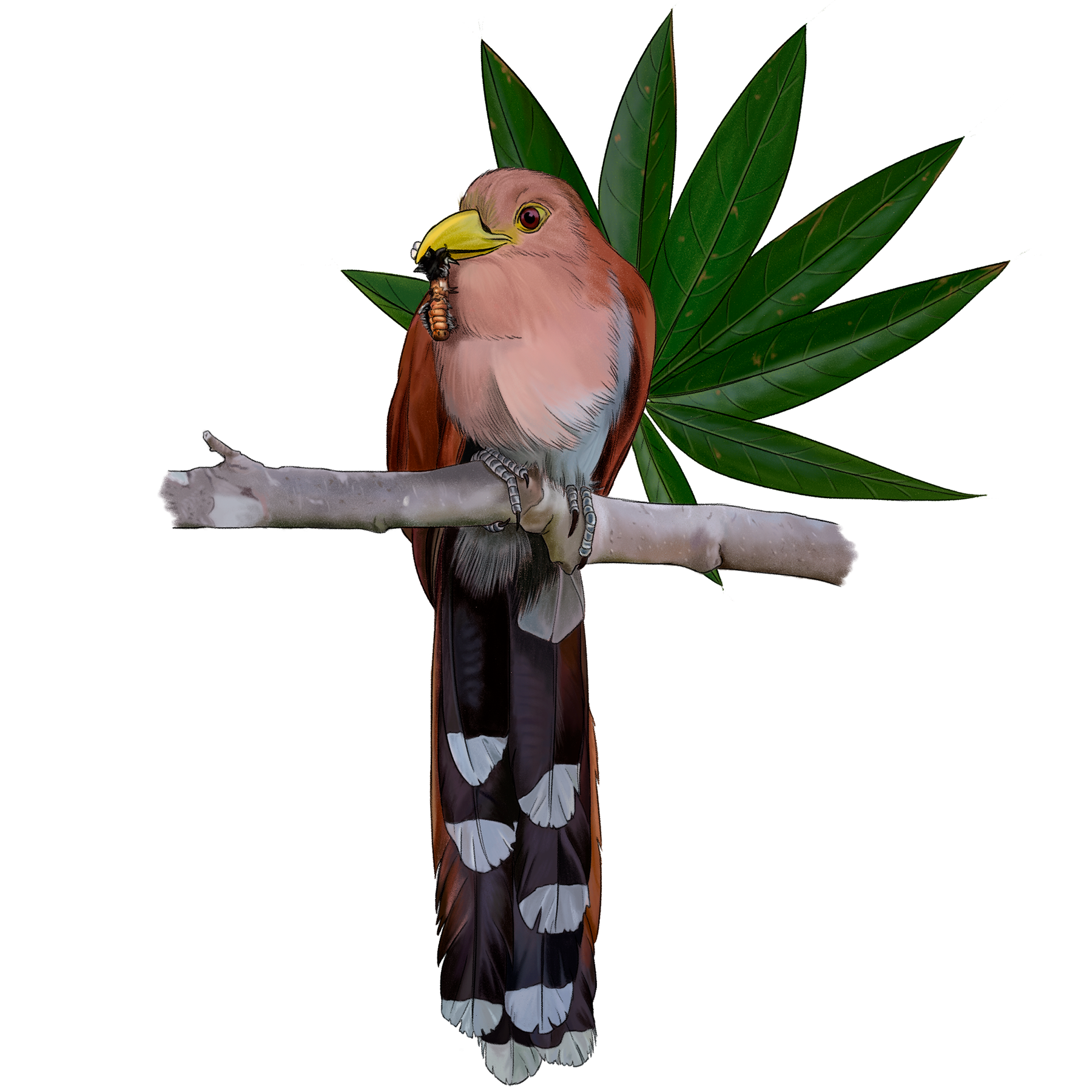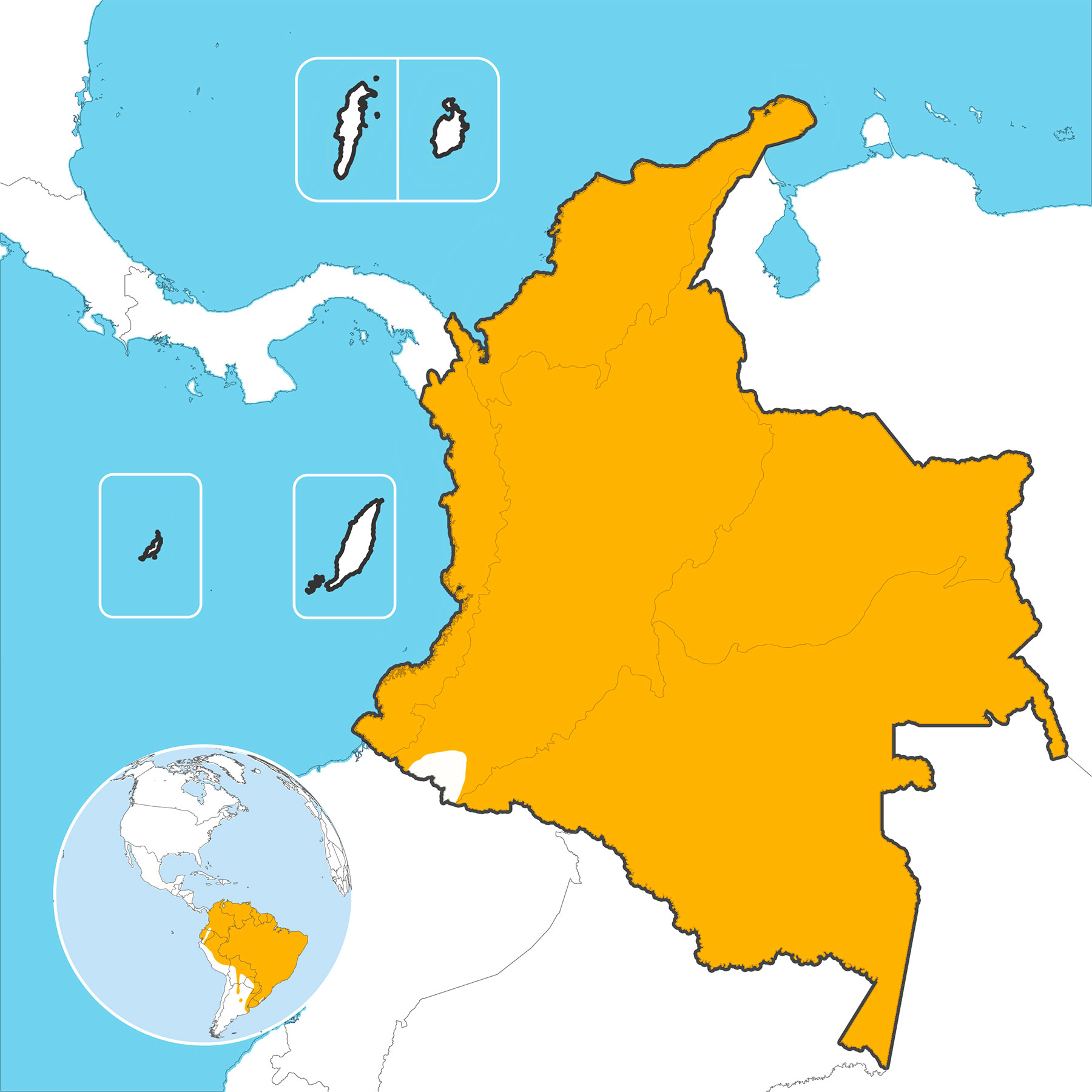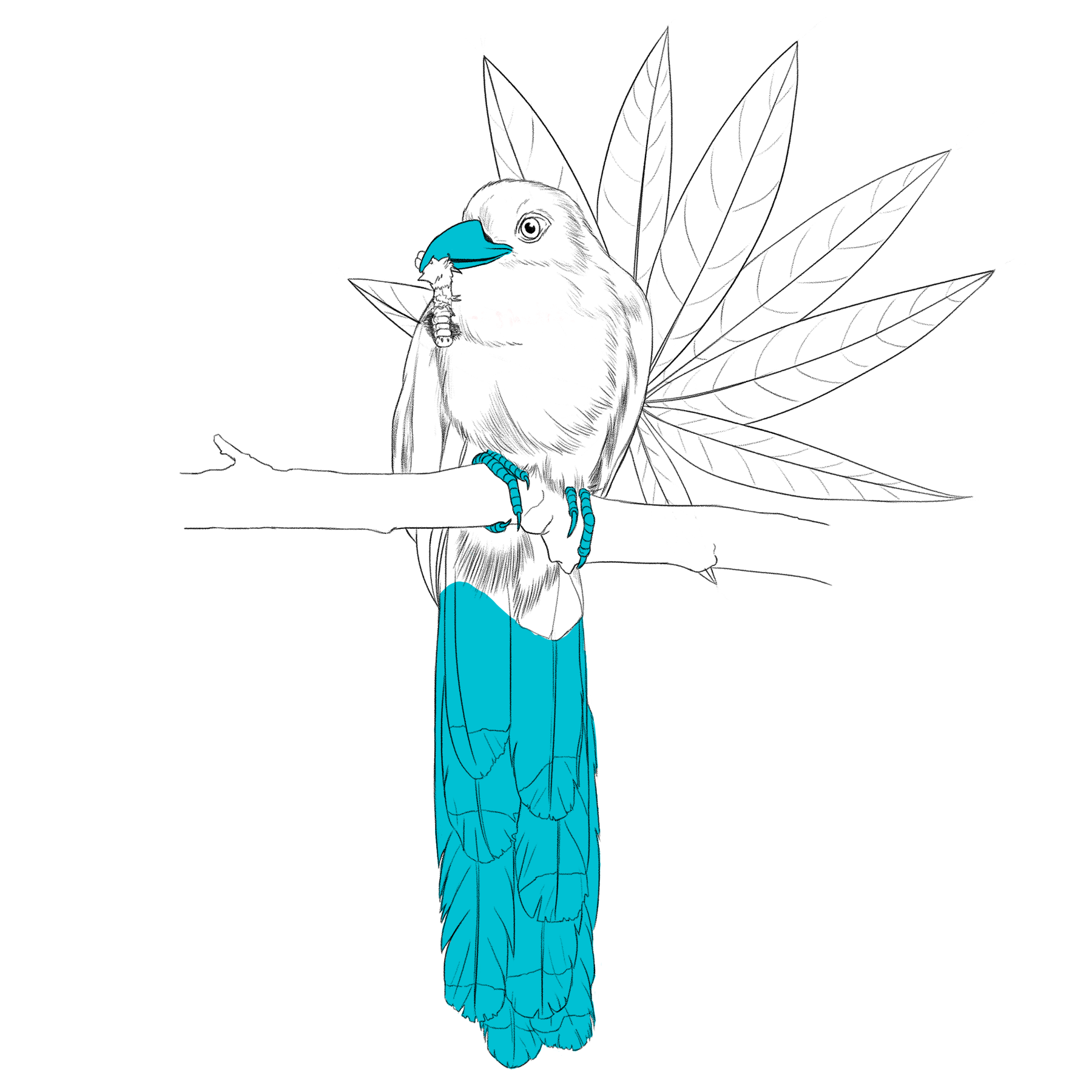
✎ Luis Mora

✎ Camilo Alméciga


Common Squirrel-cuckoo
Piaya cayanaCaribbean region
RECORRIDO VIRTUAL POR LA BIODIVERSIDAD DE COLOMBIA
Museo de Historia Natural
Universidad Nacional de Colombia

Common Squirrel-cuckoo
Piaya cayana
Morpho-functionality
Tail
Its tail feathers work like a rudder, giving it balance when jumping between branches.
Beak
Its beak is specialized to capture insects in flight and also those that take refuge in the dense foliage.
Legs
It has a set of pretensioner tendons in its legs, which become stressed when placing its legs on a branch and gives it sufficient grip.
Lifecycle
The reproductive period begins during the rainy season from October to January, although it can vary throughout the year in different regions. They build their nest with thin, cup-shaped branches with a diameter of 23 to 25 cm. Parents constantly camouflage the nest with green leaves and lianas.
The female lays two white-shelled eggs. Incubation lasts 17 days and the nesting period from thirteen to 16 days. Chicks at hatch have blackish purple fur with feathers that simulate yellowish hairs (trichophils) on the sides. Both parents care for and feed the young. Unlike others in its group, this cuckoo is not a parasite of other specie´s nests.
Common Squirrel-cuckoo
Distribution
It is a bird that stands human intervention and that is found in a great variety of habitats such as inter-Andean scrub, dry scrub, coastal forests, tropical humid forests, montane forests, foothills and paramo. P. cayana is distributed from central Mexico to northern Argentina.
Distribution area






